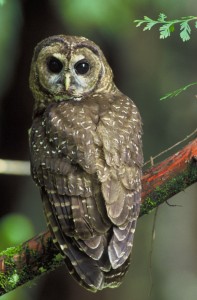
News/Reports
Chilliwack River ER #98 Physical and Biological Overview
ORIGINAL PURPOSE
To set aside productive floodplain forest stands for purposes of research and stock improvement
Physical: The reserve is in the heart of the Skagit Range of the Cascade Mountains, mostly on the floodplain of the gently flowing, slightly meandering Chilliwack River. The flat valley bottom is about 500 m wide in this area. Soils on alluvial sites are believed to be primarily Regosols, those on the adjacent slopes Podzols.
Biological: The reserve area is primarily forested with rich old-growth coniferous stands of exceptional growth. A small area of shrubland in the northwest corner is influenced by periodic flooding of Chilliwack Lake, and wetlands occur in the west central area. Three floodplain forest communities have been described. The most recent and most active alluvial sites near the north boundary support mixed forest dominated by black cottonwood, red alder, and western redcedar. Abundant understory shrubs are red- osier dogwood and salmonberry, typical herbs include lady fern and pink wintergreen. On older, better drained alluvial sites the more extensive western redcedar-western hemlock-vine maple-salmonberry-devil’s club-lady fern-moss (Mnium spp.), and western hemlock-western redcedar-vine maple-devil’s club-oak fern-moss (Hylocomium splendens) communities are present. Cedars may reach 2.75 m in diameter, and true firs 60 m in height. Other trees present include Engelmann spruce, Sitka spruce, grand fir, amabilis fir, Douglas-fir, bigleaf maple, and Pacific crab apple. This is believed to be an area of hybridization between grand and amabilis fir and between Sitka and Engelmann spruce.
Mammals noted here are the Black Bear, Black-Tailed Deer, Beaver, and Porcupine. Typical birds are the Winter Wren, Brown Creeper, Pileated Woodpecker, Blue Grouse, kinglets, and chickadees.
alder, red (Alnus rubra)
cottonwood, black (Populus trichocarpa ssp. trichocarpa)
crab apple, Pacific (Malus fusca)
devil’s club (Oplopanax horridus)
dogwood, red-osier (Cornus stolonifera)
Douglas-fir (Pseudotsuga menziesii)
fern, lady (Athyrium filix-fernina)
fern, oak (Gymnocarpium dryopteris)
fir, amabilis (Abies amabilis)
fir, grand (Abies grandis)
hemlock, western (Tsuga heterophylla)
maple, bigleaf (Acer macrophyllum)
maple, vine (Acer circinatum)
miterwort, leafy (Mitella caulescens) moss (Mnium spp.)
moss, step (Hylocomium splendens)
redcedar, western (Thuja plicata)
salal (Gaultheria shallon)
salmonberry (Rubus spectabilis)
spruce, Engelmann (Picea engelmannii)
spruce, Sitka (Picea sitchensis)
wintergreen, pink (Pyrola asarifolia)
Fauna
Bear, American Black (Ursus americanus)
Beaver, American (Castor canadensis)
Chickadee (Poecile spp.)
Creeper, Brown (Certhia americana)
Deer, Black-tailed (Odocoileus hemionus ssp. hemionus)
Grouse, Dusky (aka Blue Grouse) (Dendragapus fuliginosus)
Kinglet (Regulus spp.)
Owl, Spotted (Strix occidentalis)
Porcupine, North American (Erethizon dorsatum) Woodpecker, Pileated (Dryocopus pileatus) Wren, Winter (Troglodytes troglodytes)

